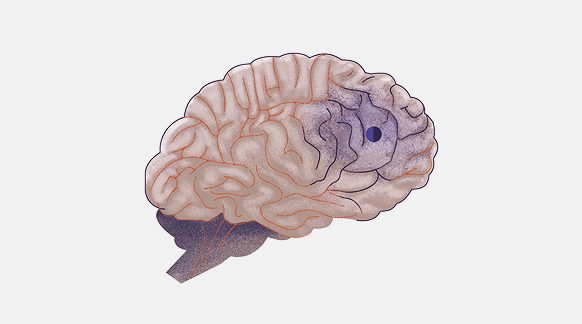Blood thinners don’t actually thin the blood. Instead, they prevent the formation of blood clots that can cause other serious health problems.
Blood thinner medications are also known as anticoagulants because they stop the process of blood coagulation, or blood clotting. If you’ve been diagnosed with atrial fibrillation (AFib), your healthcare provider may prescribe a blood thinner medication to prevent stroke.1
Who needs blood thinners?
People with an increased risk of health problems caused by blood clots may be prescribed blood thinners.
People with AFib may take blood thinners to decrease the risk of having a stroke. Strokes can happen when a blood clot blocks blood vessels in the brain. In AFib, an irregular heartbeat makes it harder for the heart to pump blood efficiently. This can cause blood to pool in a pouch in the atria (the upper chambers of the heart) called the left atrial appendage (LAA).2 When blood isn’t constantly moving, blood clots can form. If a blood clot is pumped from the heart to the brain, it causes a stroke. Blood thinner medications can help prevent blood from clotting.3

Other common uses of blood thinners include:1
Heart disease or other blood vessel diseases
Blood clot prevention after surgery
Blood clotting disorders
Congenital heart defects
How do blood thinners work?
There are two types of blood thinners for people with AFib — vitamin K antagonists and direct oral anticoagulants (DOACs). Each type works in a different way:4
Vitamin K antagonists
Vitamin K antagonists work by blocking the body’s ability to make key clotting factors from vitamin K. Without vitamin K-dependent clotting factors, there’s a lower risk of harmful clots forming.
Warfarin (also known as Coumadin® or Jantoven®) is a commonly prescribed vitamin K antagonist. People taking warfarin need regular monitoring with blood testing to make sure the blood clotting time is within the desired range to prevent health problems.5
Direct oral anticoagulants
DOACs are a newer type of blood thinner. These medications work by directly interrupting the clot-forming process. Unlike warfarin, DOACs don’t need frequent blood testing to monitor their effectiveness.6
DOAC blood thinner names include:4
Eliquis® (apixaban)
Pradaxa® (dabigatran)
Lixiana® (edoxaban)
Xarelto® (rivaroxaban)
Find out if you’re a candidate for the WATCHMAN Implant. Take the quiz
Blood thinner side effects
The main side effect of blood thinners is the risk of dangerous excessive bleeding. Bleeding can occur anywhere in the body.
Signs of serious bleeding to watch for while taking blood thinners include:1
Unexplained bruises
Cuts that don’t stop bleeding
Gums bleeding
Brown or red-colored urine
Bloody or black, tarry bowel movements
Nosebleeds
Vomit that looks like coffee grounds
Dizziness
Blood thinner side effects may vary depending on the specific blood thinner.
Other blood thinner complications
To be effective, blood thinners must be taken every day. Some blood thinners require twice-daily dosing. These medications may also interact with other drugs, food, and medical procedures.
Alternative options to blood thinners
People with non-valvular AFib (NV-AFib) have other treatment options to help prevent stroke. The WATCHMAN Implant is a safe, one-time, minimally-invasive procedure that that can reduce AFib stroke risk for life – without the long-term risk of bleeding associated with blood thinners. Learn more about how the WATCHMAN Implant works.
There are risks associated with all medical procedures. Please talk with your doctor about the risks and benefits of the WATCHMAN Implant.
Already took the quiz? Return to your personalized experience.
References:
Blood Thinners. MedlinePlus website. Updated June 27, 2024. Accessed March 13, 2025. https://medlineplus.gov/bloodthinners.html
Left Atrial Appendage Closure. Cleveland Clinic website. Updated November 27, 2024. Accessed March 20, 2025. https://my.clevelandclinic.org/health/treatments/17167-left-atrial-appendage--closure
What Is Atrial Fibrillation? American Heart Association website. Updated March 23, 2023. Accessed March 13, 2025. https://www.heart.org/en/health-topics/atrial-fibrillation/what-is-atrial-fibrillation-afib-or-af
Joglar JA, Chung MK, Armbruster AL, et al. 2023 ACC/AHA/ACCP/HRS Guideline for the Diagnosis and Management of Atrial Fibrillation: A Report of the American College of Cardiology/American Heart Association Joint Committee on Clinical Practice Guidelines. Circulation. 2024;149(1):e1-e156. doi:10.1161/CIR.0000000000001193
A Guide to Taking Warfarin. American Heart Association website. Updated October 24, 2024. Accessed March 13, 2025. https://www.heart.org/en/health-topics/arrhythmia/prevention--treatment-of-arrhythmia/a-patients-guide-to-taking-warfarin
What Are Direct Oral Anticoagulants (DOACs) and How Do They Work? British Heart Foundation website. Updated April 1, 2023. Accessed March 13, 2025. https://www.bhf.org.uk/informationsupport/heart-matters-magazine/medical/drug-cabinet/doac
All images are the property of Boston Scientific. All trademarks are the property of their respective owners.
Content on this web page is for Informational Purposes only and does not constitute medical advice and should not be used for medical diagnoses. Boston Scientific strongly recommends that you consult with your physician on all matters pertaining to your health or to address any clinical/medical questions.
Important Safety Information
The WATCHMAN FLX and WATCHMAN FLX Pro Devices are permanent implants designed to close the left atrial appendage in the heart in an effort to reduce the risk of stroke.
With all medical procedures there are risks associated with the implant procedure and the use of the device. The risks include, but are not limited to, accidental puncture of the heart causing fluid to collect around the heart possibly leading towards the need for an additional procedure, allergic reaction, anesthesia risks, altered mental status or confusion after procedure, arrhythmias (irregular heartbeats), bleeding or throat pain from the TEE (Trans Esophageal Echo) probe, chest pain/discomfort, congestive heart failure, renal failure, excessive bleeding, gastrointestinal bleeding, groin puncture bleed, bruising at the catheter insertion site, groin pain, anemia (reduced red blood cells requiring transfusion), hypotension, infection/pneumonia (example: in or around your heart or lungs), misplacement of the device, improper seal of the appendage or movement of device from appendage wall, clot formation on the device, blood clot or air bubbles in the lungs or other organs, stroke, transient ischemic attack (temporary stroke-like symptoms), cranial bleed (bleeding in or around your brain), thrombosis (blockage of a blood vessel or vein by a clot) and in rare cases death can occur.
Be sure to talk with your doctor so that you thoroughly understand all of the risks and benefits associated with the implantation of the device. SH-2109508-AA

